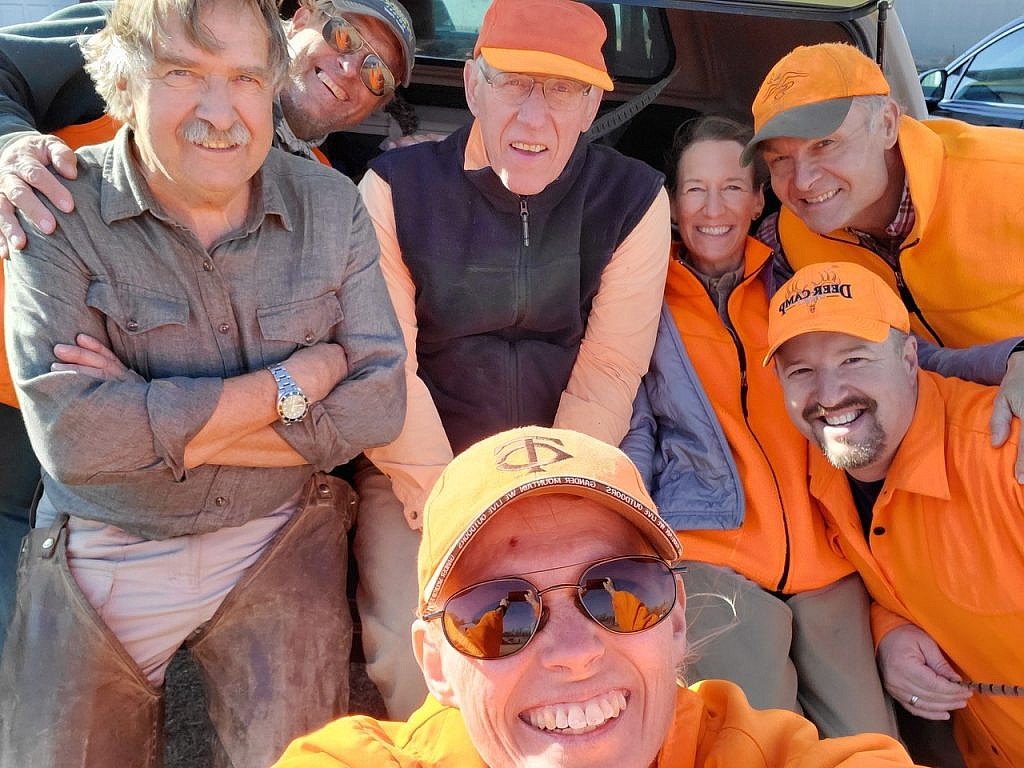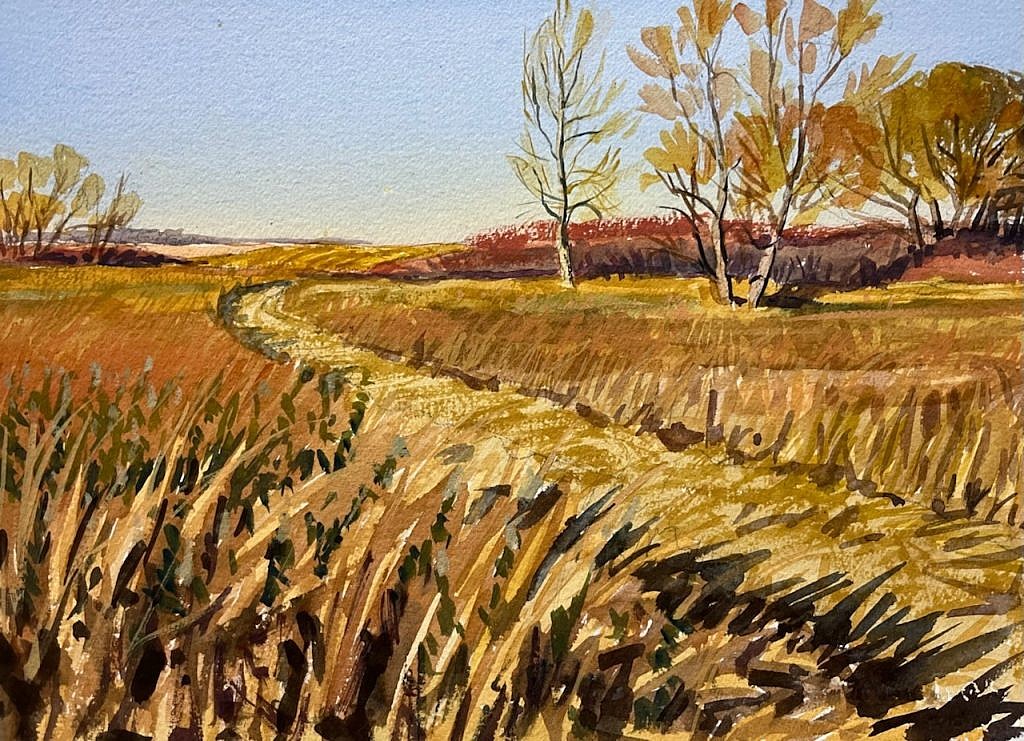
by Terry Wieland
One of our purposes here at the Gray’s website is to deliver flash reports from our never-ending adventures afield—Scott Sadil on boats and fish, Brooke Chilvers on art, food, and wherever else her cosmopolitan tastes take her, and myself on guns, shooting, and hunting.
To that end, herewith a quick dispatch from southwestern Minnesota, where I just spent a delightful three days chasing pheasants, braving the waist-high CRP (Conservation Reserve Program) prairie grass, dodging badger holes, and firing the odd shot at a disappearing rooster.
This gig came about because, a year ago, I wrote a woe-is-me piece about my final hunt in South Dakota after 15 years hunting there on a friend’s property. Eric Petersen, a devoted Gray’s reader and host of an annual hunt that includes my sometime-accomplice, the artist C.D. Clarke, suggested C.D. invite me to drown my sorrows by joining them this year.
Naturally, I said yes very quickly. There then ensued six months’ worth of reports on this year’s hatch, monitored by another member of the group, retired wildlife biologist Al Berner. Al is a statistics enthusiast to rival a baseball Sabermetrician (He can’t help himself… Eric told me) and every so often he would impart some stats to indicate this year’s pheasant crop was going to be at least as good as last year’s. All well and good.
C.D. was accompanied by his wife, Tracey, who was in search of her first pheasant at Eric’s place in three years of trying. Then there was Eric’s daughter, Heidi, and her husband Matt. So we had a group of, off and on, anywhere from three hunters to seven.

I won’t bore you with a step-by-step account of my hesitant assault on the CRP. My new titanium hip handled it well, but I was still leery of badger holes. Since most of what we hunted was large tracts returned to CRP and prairie grasses by Eric over the years, the walking was iffy. Anyway, the first day, I got a shot at one rooster crossing overhead and swung on it half-heartedly, with the usual result of a half-hearted swing.
The problem was, while Al was undoubtedly correct about pheasant numbers, there had been a very late hatch—late August, apparently—so many young roosters—what Eric called “squeakers”—were almost indistinguishable from hens. Preferring to err on the safe side of legality, if I couldn’t tell it was a rooster, I didn’t shoot. This affected everyone, of course, but the others knew what to look for, while I just look for a long tail. Heidi was able to see the red eye-patch which, on a fast-rising pheasant in a high wind, would take a lot more practice for me.
And speaking of high winds, all of it was not helped by extremely dry conditions, temperatures in the high 70s the first day, and winds that would sway a marble statue.
Fortunately, all this travail was alleviated by a routine of returning to Eric’s house each day for lunch, courtesy of his wife, Gail’s, excellent way with large hams, grass-fed beef, and potatoes from the garden. And dinner, too, which always turned into a discussion of intriguing things like single-malts and literature.

The record would show that, over the course of three days, we collected about a dozen birds. I added but one, a rather spectacular shot early on Day Two on a rising rooster with both tail and tail wind, confirming my belief that one such shot per trip is all you really need.
Al had to leave early, but I later heard from him that: For the 2.4 hours I was afield with the group, I observed 44 birds for 18.3/hour which is above my long term average (13.2) and above average for October (12.1). As Eric says, he can’t help himself.
For my part, I saw enough birds to keep it interesting, fired my Pedro Arrizabalaga five times, collected my one high rooster, and brought the tail feathers home for a trap-shooting friend who wanted some for a new fedora.
Early in the morning, as I was leaving, driving south from Tyler on Highway 23, a mob of six roosters swarmed my car from the shoulder of the road, with one almost coming in through the windshield, and in the mirror I watched as they settled into a bean field, undoubtedly cackling to one another. It was that kind of trip.
Gray’s shooting editor Terry Wieland divides pheasant hunting into two phases: Hunting for the birds, and then hunting for someone who likes cooking them so he can give them away. C.D. Clarke likes plucking and roasting, so he inherited Wieland’s lone bird.
